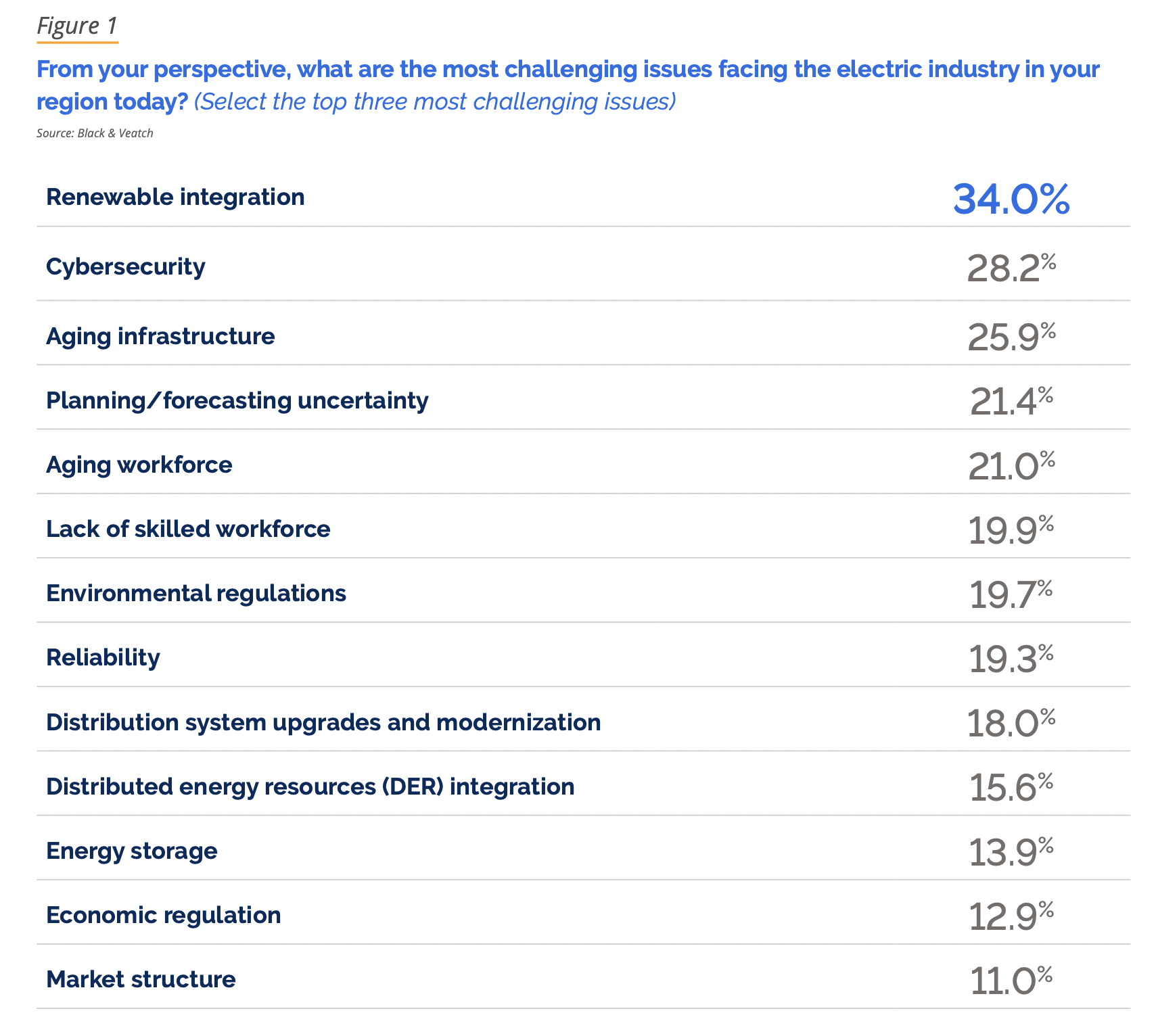
The energy sector’s path to net zero is complicated. As other markets electrify their operations to wean off fossil fuels, the increased load on an already transitioning (and aging) power grid adds to the technological challenges for reaching a 100 percent clean energy economy.
This conundrum is clear to those in the industry. Of the nearly 500 power sector stakeholders surveyed for the 2021 Black & Veatch Electric Report, 75 percent claimed they are directing capital toward clean energy and renewables, although only 10 percent believe the 100 percent clean generation model has been validated.
The energy sector’s willingness to pursue decarbonization without knowing how to get to the finish line — or even where it is — signals a reassuring dedication. As the market moves onward into the clean energy transition, this dedication will be crucial to successfully incorporating the diverse mix of technologies we will need to form an energy market that can successfully support a net-zero emissions future.
Three limiting factors that influence clean energy growth
A successful United States’ clean energy transition will involve the proliferation and integration of renewable energy sources. As outlined in Black & Veatch’s report, industry leaders believe that high cost, technological shortfalls and limitations in the transmission infrastructure hamper domestic renewable energy growth (Figure 1).

Despite a dramatic decrease over the last decade, the cost of energy from some renewable sources is still high. Renewables have also been subject to cost fluctuations related to political factors and current events. Such is the case of supply chain disruptions linked to COVID-19 and tariffs on imported goods, such as solar cells and modules coming from China.
A key current technological shortfall is the lack of cost-effective, long-term, clean energy storage options to enable seasonal load shifting. Another critical shortfall is the limitation of the power grid and other infrastructure to handle increasing stressors with resilience and reliability.
Infrastructure limitations impede the adequate transmission and distribution of available, low-cost energy to the areas that need it. This happens, for example, when a solar field located in the desert is generating large amounts of electricity but there is no practical way to get it to an area with high demand.
Barrier entanglement
High costs, technological shortfalls and limitations in the transmission infrastructure are entangled. A full solution to one cannot be achieved unless the others are addressed as well. Take cost, for example, which is often intertwined with technological shortfalls. To tackle the intermittent nature of solar and wind generation, energy storage technologies are needed to fill in the gaps. Green hydrogen storage is a potential solution, but its limited market scale contributes to making it cost-prohibitive for many operations.
Technological shortfalls and cost also intersect in the massive upgrades to the power grid required to overcome the limitations in the current transmission infrastructure. Upgrading the grid is extremely expensive, and potential solutions like distributed energy storage are not yet at scale.
Creating solutions
In the search for answers to accelerate the clean energy transition, we must remember that success in finding effective, lasting solutions will require a case-by-case approach.
The technologies that will enable a net-zero economy will include wind and solar generation, hydropower and geothermal energy, battery energy storage, nuclear power, hydrogen and technologies we haven’t yet created. But none of these is a one-size-fits-all solution.
Take energy storage, for example. A utility that desires energy storage for use in frequency regulation, will require fast and frequent discharge, would likely look to lithium-ion battery storage. The costs of lithium-ion batteries have decreased considerably over the past years.
In a situation where energy storage is needed over many days, battery storage may not be the best choice. In this case, a solution like green hydrogen may be the better option. Geographical concerns also come into play. In an area situated on a slope, pumped-hydro — where water is pumped uphill, stored in a reservoir, and released when needed, generating electricity as it comes back down — may prove a good option.
Diversifying the response
Each question posed by the transition to clean energy has a unique answer that often involves multiple technologies. In the desert, solar photovoltaic generation may be the technology of choice, while wind may be the better solution for the Great Plains. Renewable hydrogen may work well to leverage some to the existing transportation infrastructure, while nuclear offers the potential of a low overall carbon output.
Thus, successful approaches to clean energy solutions should be technology agnostic, and each situation will have its own unique response.
Addressing the challenges to clean energy transition will not be easy or simple. Overcoming the cost barriers to renewable energy growth, developing the new technologies required, and overhauling the transmission infrastructure, will require massive investment and dedication. Choosing to explore the full range of solutions at our disposal can mitigate all three, smoothing the transition to our net-zero economy.
Image credit: tope007/Adobe Stock

Dr. Ralph Romero is a Senior Managing Director of Black & Veatch Management Consulting. He specializes in the assessment of novel technologies, product design, product performance and reliability, hi-tech manufacturing and product quality, solar photovoltaic (PV) modules, and energy storage.














